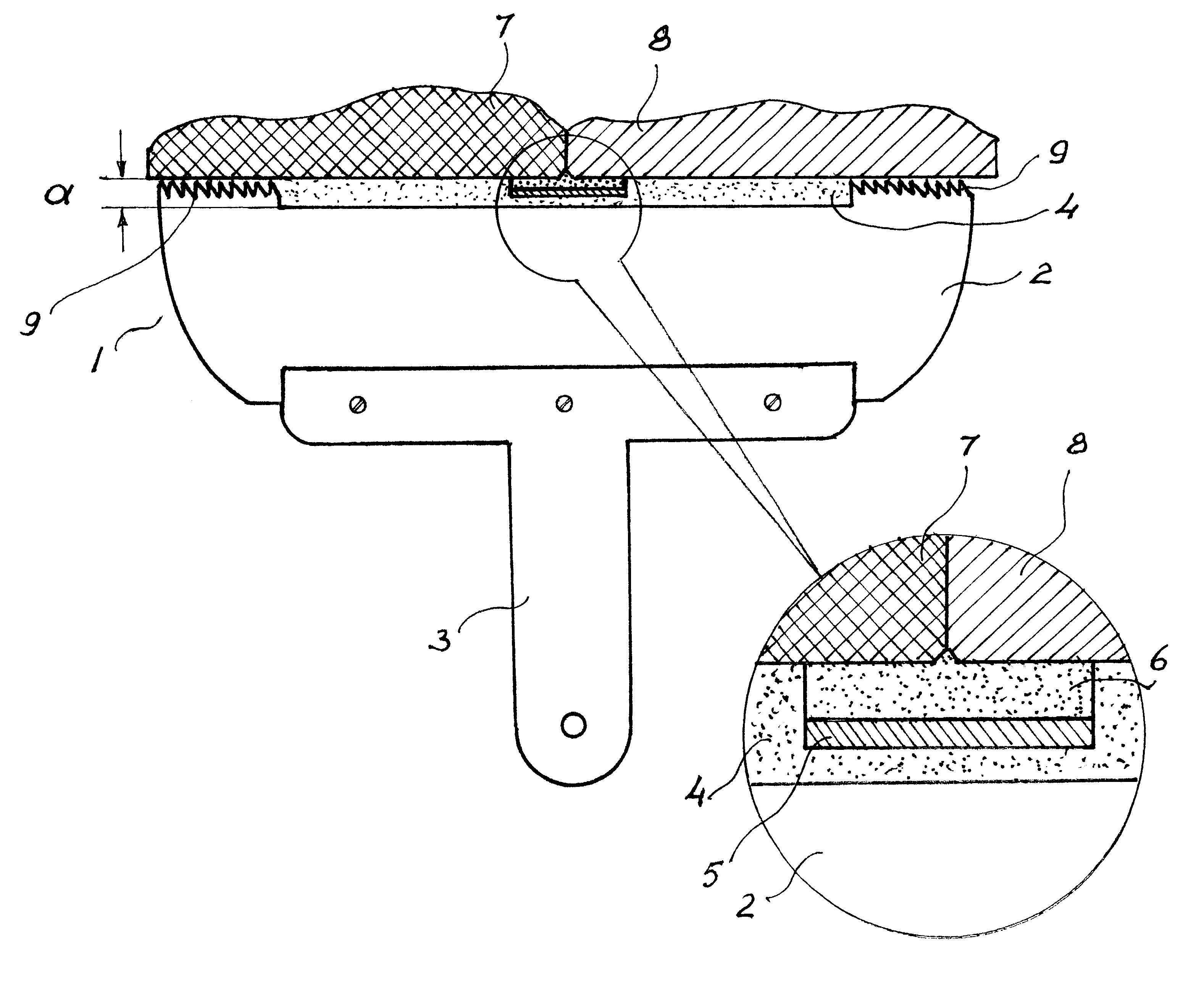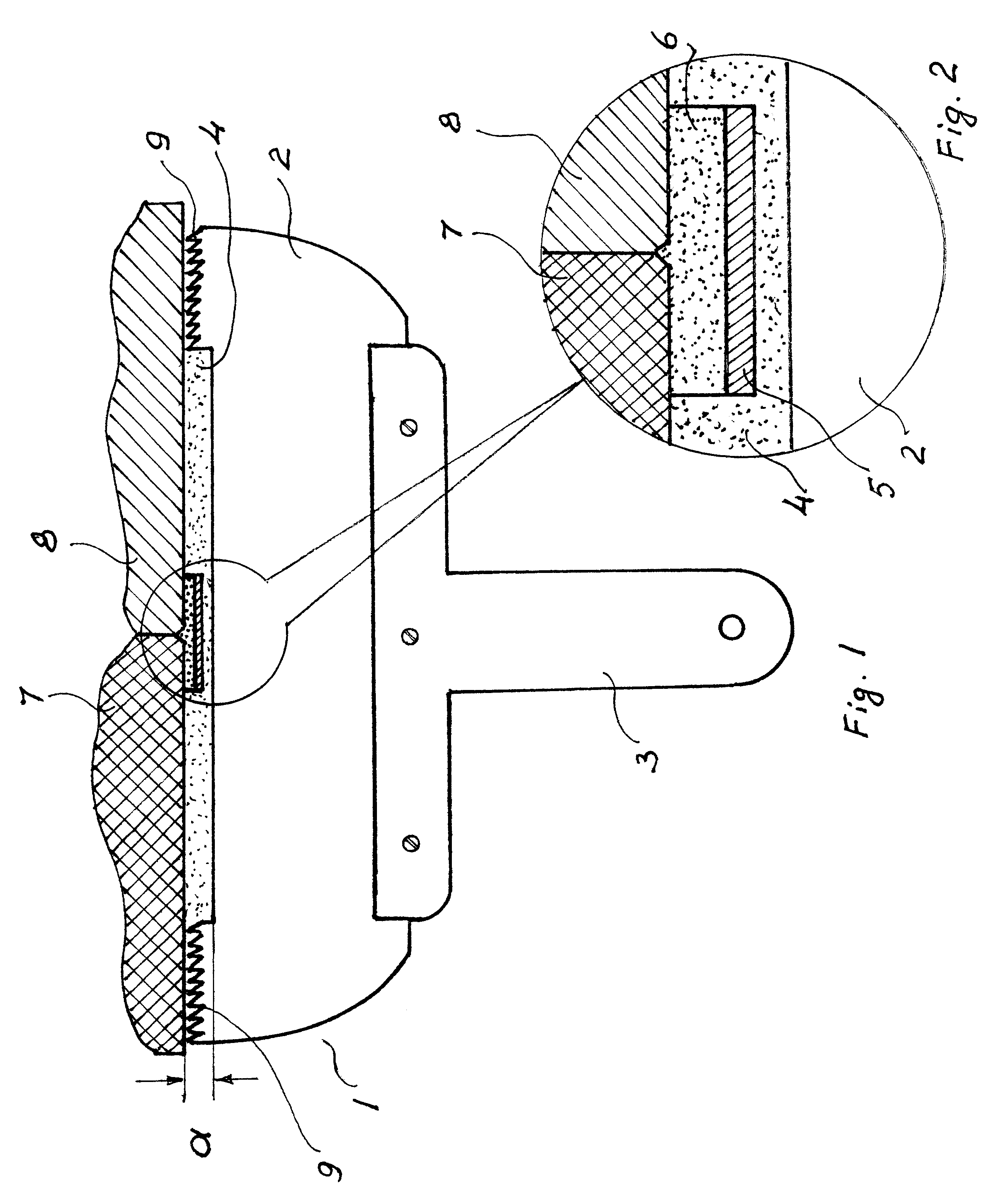Serrated hand tool for plaster application over a surface joint
a surface joint and hand tool technology, applied in the direction of coatings, roads, constructions, etc., can solve the problems of long method time, uneven final surface of hardened compound, and difficulty in maintaining constant depth
- Summary
- Abstract
- Description
- Claims
- Application Information
AI Technical Summary
Benefits of technology
Problems solved by technology
Method used
Image
Examples
Embodiment Construction
A detailed description of the first embodiment of the present invention follows with reference to accompanying drawings in which like elements are indicated by like reference numerals.
FIG. 1 illustrates a view of the hand tool (1) of the invention containing a metal blade (2) with a handle (3). The edge of the blade (2) located opposite the handle (3) consists of three sections: two serrated-side sections (9) and a central section (4). Serrated sections (9) have a plurality of teeth of generally triangular shape. One particular example of the triangular shape was described in detail in the previous patent application. Briefly stating, each of the side sections (9) has a plurality of teeth placed along the length of each section (9). Each tooth is of generally triangular shape. Our evaluation indicates that although many shapes of teeth and notches would produce acceptable results in use, one example of the good utility of the tool can be achieved by making the triangular tooth in th...
PUM
 Login to View More
Login to View More Abstract
Description
Claims
Application Information
 Login to View More
Login to View More - R&D
- Intellectual Property
- Life Sciences
- Materials
- Tech Scout
- Unparalleled Data Quality
- Higher Quality Content
- 60% Fewer Hallucinations
Browse by: Latest US Patents, China's latest patents, Technical Efficacy Thesaurus, Application Domain, Technology Topic, Popular Technical Reports.
© 2025 PatSnap. All rights reserved.Legal|Privacy policy|Modern Slavery Act Transparency Statement|Sitemap|About US| Contact US: help@patsnap.com


